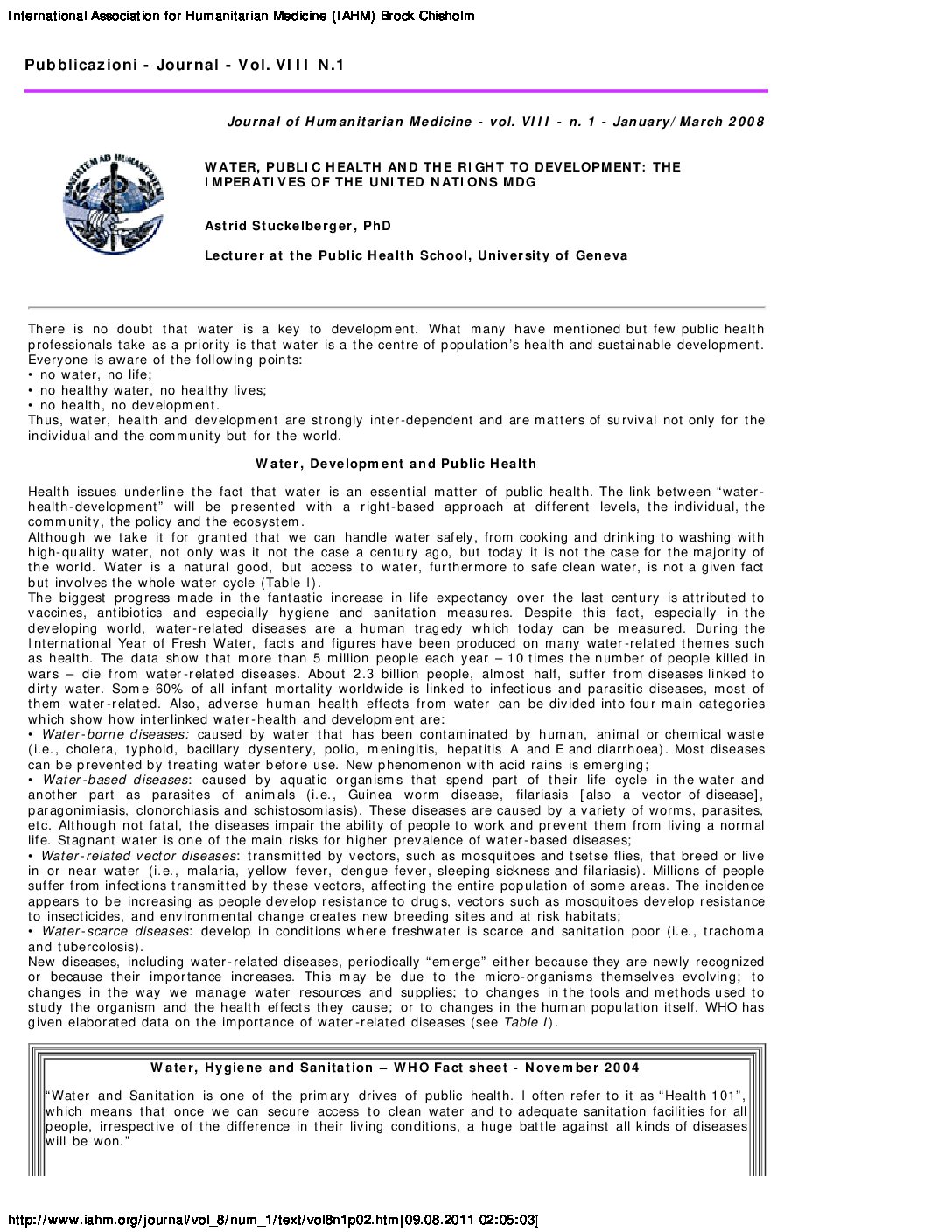EXAME interview – Some scientists predict than man might live 150 years. Do you believe it is really possible?
Some scientists predict than man might live 150 years. Do you believe it is really possible?
Some scientists predict than man might live 150 years. Do you believe it is really possible?
Die papierbasierten Patientenakten haben ausgedient – mit der Einfüh- rung der elektronischen Gesundheitsakte beginnt auch in der Schweiz der Aufbau einer E-Health-Infrastruktur, die effiziente und sichere Behandlungen ermöglichen soll. Dabei fällt allerdings eine grosse Menge elektronisch gespeicherter Patientendaten an. Der Schutz der heiklen Informationen muss oberste Priorität haben und stellt hohe Anforderungen an den Datenschutz.
Une vie plus longue pour les personnes âgées :
les Nations Unies progressent-elles sur ce terrain ?
A Paradigm for Global Family in a Culture of Peace – Intervention of Dr Astrid Stuckelberger
The Global Family has changed!
Have we realized …..
indeed
5th World Meeting of Families of the Catholic church in Valencia, Spain where I was invited, thanks to some lobby work of some of us, for the first time, older grand-parents were mentioned and invited to speak on stage! How long do we have to wait until the concept of the family will encompass all generations, all situations and give this genuine global family feeling we are all interlinked, interrelated and interdependent on a small part of the universe where people have the choice to love each other beyond race, nationalities, geography and more..
Enhancement-Medizin: es braucht eine kritische Diskussion
| Cookie | Duration | Description |
|---|---|---|
| cookielawinfo-checkbox-analytics | 11 months | This cookie is set by GDPR Cookie Consent plugin. The cookie is used to store the user consent for the cookies in the category "Analytics". |
| cookielawinfo-checkbox-functional | 11 months | The cookie is set by GDPR cookie consent to record the user consent for the cookies in the category "Functional". |
| cookielawinfo-checkbox-necessary | 11 months | This cookie is set by GDPR Cookie Consent plugin. The cookies is used to store the user consent for the cookies in the category "Necessary". |
| cookielawinfo-checkbox-others | 11 months | This cookie is set by GDPR Cookie Consent plugin. The cookie is used to store the user consent for the cookies in the category "Other. |
| cookielawinfo-checkbox-performance | 11 months | This cookie is set by GDPR Cookie Consent plugin. The cookie is used to store the user consent for the cookies in the category "Performance". |
| viewed_cookie_policy | 11 months | The cookie is set by the GDPR Cookie Consent plugin and is used to store whether or not user has consented to the use of cookies. It does not store any personal data. |
Select at least 2 products
to compare

